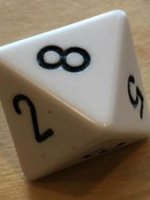Journeys Through the Radiant Citadel was the first truly new – as in not derived from another IP like Magic the Gathering or Critical Role or a revival – setting D&D has had in awhile. Its blend of solarpunk optimism and altruism combined with inspiration from real cultures created something fresh and different from previous 5E adventures, and in my review I talked about why this was the D&D adventure/setting book I had been wanting for a long time. But did the critics think it was delightful, dreary, or something in between? Let's take a look.

Polygon was similarly effusive in its praise of JTtRC, giving it the “Polygon Recommends” badge. Even though JTtRC is fantasy, Polygon favorably compared it to Star Trek, saying that the “setting is simply dripping with a Gene Roddenberry-inspired feel” and it's an apt comparison. Like Trek, players will have the opportunity to explore strange new worlds, and the book's base setting is utopian in nature. The fact that the problems can be solved through diplomacy instead of just combat furthered its comparison to Star Trek. Polygon also agreed with BoLS in praising how JTtRC combines the adventure tropes we're used to in D&D with inspiration from real-world cultures, plots filled with action, and well-rounded NPCs. Polygon praised JTtRC for its DM aids and advice. The scale of the adventures was singled out as being challenging for high-level characters without wiping out starting characters, and encouraging other play styles and clever solutions. Polygon summed up its review of JTtRC by saying it demonstrated “explosive creativity that can come by bringing new voices to the game.” Like me, Polygon hopes WotC will continue to embrace fresh perspectives.
TechRaptor compares JTtRC to Candlekeep Mysteries, considering it an antidote for D&D players who don't have time for long campaigns. While TechRaptor doesn't directly reference Star Trek it does say that JTtRC is “the ideal representation of a melting pot of cultures” as well as “peak magical fiction.” As other reviewers said, TechRaptor liked that JTtRC provided adventure variety, building in investigation, not just combat. In fact, it labeled the low level adventure “Salted Legacy” as possibly the perfect introductory D&D adventure thanks to its blend of role-playing and stat checks to demonstrate what a game can be like without rising a total party kill. It also praised “Between Tangled Roots” for balancing combat and role-playing to heighten tension. TechRaptor called JTtRC both “an absolute delight to read” and “some of the best adventures I've read for D&D” because of how it elevates short form adventure. TechRaptor had no complaints and ample praise for JTtRC.



The Good: "Ambitious"
Bell of Lost Souls called JTtRC “ambitious” – and jokes about how it has more grandmothers than any other D&D book. BoLS really appreciated how JTtRC encourages exploration through both its vibrant settings detailed in each gazetteer and how the adventures for each location are handled. BoLS also praised the citadel itself, and how it's designed to be flexible enough to be added to any campaign and provide a new home-base for players, as well as to treat it as a way-station to any other location. What made JTtRC “sing” in BoLS's estimation is that each scenario truly is a D&D adventure perfectly blended with new settings inspired from real-world lore and cultures. It's easy to do that badly, but the JTtRC designers put in the hard work to do it well. BoLS also added, “This isn’t WotC’s diversity book. It’s an adventure book with many diverse settings.”Polygon was similarly effusive in its praise of JTtRC, giving it the “Polygon Recommends” badge. Even though JTtRC is fantasy, Polygon favorably compared it to Star Trek, saying that the “setting is simply dripping with a Gene Roddenberry-inspired feel” and it's an apt comparison. Like Trek, players will have the opportunity to explore strange new worlds, and the book's base setting is utopian in nature. The fact that the problems can be solved through diplomacy instead of just combat furthered its comparison to Star Trek. Polygon also agreed with BoLS in praising how JTtRC combines the adventure tropes we're used to in D&D with inspiration from real-world cultures, plots filled with action, and well-rounded NPCs. Polygon praised JTtRC for its DM aids and advice. The scale of the adventures was singled out as being challenging for high-level characters without wiping out starting characters, and encouraging other play styles and clever solutions. Polygon summed up its review of JTtRC by saying it demonstrated “explosive creativity that can come by bringing new voices to the game.” Like me, Polygon hopes WotC will continue to embrace fresh perspectives.
TechRaptor compares JTtRC to Candlekeep Mysteries, considering it an antidote for D&D players who don't have time for long campaigns. While TechRaptor doesn't directly reference Star Trek it does say that JTtRC is “the ideal representation of a melting pot of cultures” as well as “peak magical fiction.” As other reviewers said, TechRaptor liked that JTtRC provided adventure variety, building in investigation, not just combat. In fact, it labeled the low level adventure “Salted Legacy” as possibly the perfect introductory D&D adventure thanks to its blend of role-playing and stat checks to demonstrate what a game can be like without rising a total party kill. It also praised “Between Tangled Roots” for balancing combat and role-playing to heighten tension. TechRaptor called JTtRC both “an absolute delight to read” and “some of the best adventures I've read for D&D” because of how it elevates short form adventure. TechRaptor had no complaints and ample praise for JTtRC.

